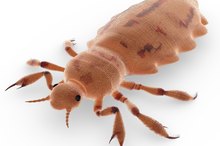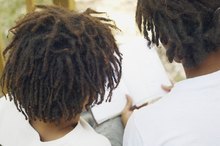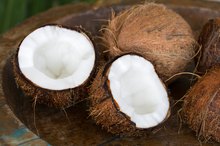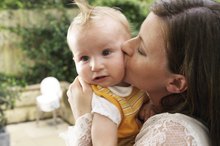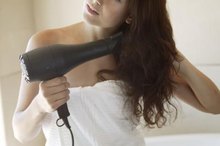How to Clean Hair Brushes & Lice
Adult lice are about the size and color of a sesame seed. Lice do not spread disease and they do not cause infections or other serious health concerns. However, their bites can cause scalp sores and itching, which can be a painful nuisance. Lice are highly contagious and will attach themselves to anything they come in contact with—including hair brushes. It is important to treat all of your hair brushes if any family member is found to have head lice.
Fill a large pot with water and heat it on the stove top. Blue Shield of California recommends soaking brushes that have come in contact with lice in water that is at least 130 degrees F.
How to Treat Head Lice During Pregnancy
Learn More
Turn off the burner and carefully place the brushes in the hot water. Allow the brushes to soak in the hot water for approximately ten minutes. A ten minute soak in hot water is usually enough to kill any lice that are attached to the brushes.
Use a pair of tongs to remove the brushes from the hot water after ten minutes. Place the brushes on a clean towel and allow them to air dry.
How to Remove Lice From Helmets
Learn More
Fill your bathroom sink halfway with hot water and add a teaspoon of hair shampoo that is recommended to kill head lice. The shampoo method is an alternative to soaking the brushes in hot water.
Place the brushes in the shampoo solution and agitate the water to make it sudsy.
Allow the brushes to soak in the shampoo solution for the manufacturer’s recommended amount of time.
Rinse the brushes with clear water and place them on a clean towel to air dry.
Tips
Use the same process to destroy any lice that may have attached to combs.
It is important to note that other objects in your home should be treated, besides hair brushes. This includes bed linens and cloth toys which can be cleaned in the washing machine and dried in the dryer for at least 30 minutes on high heat. Mattresses, carpets and fabric furniture should all be vacuumed thoroughly, and the entire family should be treated with a head lice shampoo.
The best way to prevent head lice is not to share combs or brushes with anyone. Hats, scarves and coats should not be shared either.
Warnings
Do not remove any tangled or attached hair from the hairbrushes until they are soaked in the hot water or lice shampoo solution. Once the lice have been killed by the hot water, the brushes can be dried and the hair removed later.
Related Articles
References
- Centers for Disease Control and Prevention. Head Lice. Prevention & Control
- Centers for Disease Control and Prevention. Head Lice. Biology
- Centers for Disease Control and Prevention. Head Lice. Frequently Asked Questions (FAQs)
- Meister L, Ochsendorf F. Head Lice. Dtsch Arztebl Int. 2016;113(45):763-772. doi:10.3238/arztebl.2016.0763.
- American Academy of Pediatrics. healthychildrlen.org. Head Lice: What Parents Need to Know
- Centers for Disease Control and Prevention. Head Lice. Treatment
- Devore CD, Schutze GE. Head Lice. Pediatrics. 2015;135(5). doi:10.1542/peds.2015-0746.
- Meister L, Ochsendorf F. Head Lice: Epidemiology, Biology, Diagnosis, and Treatment. Deutsches Ärzteblatt International. 2016;113(45):763-772. doi:10.3238/arztebl.2016.0763.
Tips
- Use the same process to destroy any lice that may have attached to combs.
- It is important to note that other objects in your home should be treated, besides hair brushes. This includes bed linens and cloth toys which can be cleaned in the washing machine and dried in the dryer for at least 30 minutes on high heat. Mattresses, carpets and fabric furniture should all be vacuumed thoroughly, and the entire family should be treated with a head lice shampoo.
- The best way to prevent head lice is not to share combs or brushes with anyone. Hats, scarves and coats should not be shared either.
Warnings
- Do not remove any tangled or attached hair from the hairbrushes until they are soaked in the hot water or lice shampoo solution. Once the lice have been killed by the hot water, the brushes can be dried and the hair removed later.
Writer Bio
Jonae Fredericks started writing in 2007. She also has a background as a licensed cosmetologist and certified skin-care specialist. Jonae Fredericks is a certified paraeducator, presently working in the public education system.
